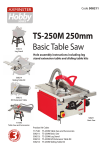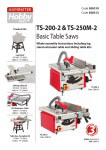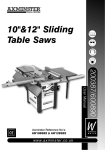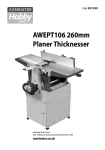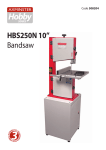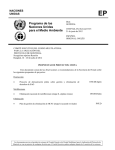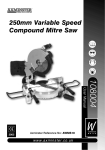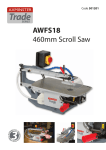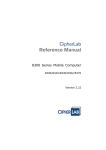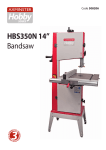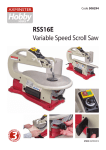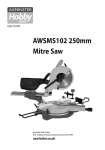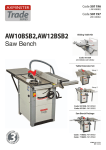Download Axminster C0 Specifications
Transcript
Code: 501242 TS-200 200mm Basic Table Saw 501248 Leg Stand Hole assembly instructions including leg stand extension table and sliding table kits 501254 Sliding Table Kit 700058 R/H Extension Table Product Code Kits 717218: TS-200 Table Saw 501242: TS-200 Basic Saw 501248: TS-200 Leg Stand 700058: TS-200 R/H Extension Table Kit 501254: TS-200 Sliding Table Kit Axminster Tool Centre, Unit 10 Weycroft Avenue, Axminster, Devon EX13 5PH 717218 Table Saw axminster.co.uk 501242 Basic Saw Index of Contents Page No. 02 Index of Contents Declaration of Conformity 02 Parts Index 03-04-05-06-07 General Instructions for 230V Machines 07-08-09 Specific Instructions/Precautions for the Saw Table 09-10 Specifications 10 Assembly Instructions 11-12-13-14-15-16-17-18-19-20 Illustration & Parts Description 21-22 Setup & Adjustments 23-24 Operating Instructions 25-26 Changing the Saw Blade 26-27 Maintenance 27 Parts Breakdown for TS-200 Table Saw 28-29 Parts List for TS-200 Table Saw 30 Parts List & Breakdown for the Sliding Carriage 31 Declaration of Conformity Copied from CE Certificate The undersigned, P. Hartstein authorised by Qingdao Henry Machinery Co. Ltd. North Point, Cuihou Road Tonghe Industrial Zone Pingdu, Qingdao 266706 manufactured by Qingdao Henry Machinery Co.is in compliance with the following standards or standardisation documents in accordance with Council Directives 93/68/EEC Model number HM-TS200 symbols below advise that you follow the correct Warning The safety procedures when using this machine. Fully read manual and safety instructions before use 02 Ear protection should be worn Eye protection should be worn Dust mask should be worn Two Man Assembly HAZARD Motor gets hot Parts Index Model Number: Quantity HM-TS200 Kit Order No’s Description 1 off Basic Table Saw (with Saw Blade & Riving Knife fitted) A 501242-717218 2 off Sliding Carriage Supporting Arms B 501254 1 off Push Stick B1 501242-717218 1 off Mitre Fence Steel Bar B2 501242-717218 1 off Saw Guard Steel Mesh B3 501242-717218 1 off Work Clamp Assembly C 501242-717218 1 off Sliding Carriage Table D 501254 1 off Mitre Fence E 501242-717218 2 off Operating Wheel Handles F 501242-717218 1 off Mitre Fence Clamping Knob G 501242-717218 1 off 30mm Hose Support Bracket H 717218 1 off Dust Extraction Moulding Support Bracket I 717218 1 off 4mm, 3mm Allen Keys J 501242-717218 K 717218-501254 1 off 10-13mm, 13-15mm & 17-19 Spanners 2 off Screwdrivers 4 off M6 x 30 Hex Bolts 4 off M6 x 46 Countersunk Heads & Nuts 4 off M6 x 16 Hex Bolts & Nuts 2 off Carriage Arm End Stops 1 off 100mm Dust Extraction Moulding with Inlets 50/30mm L 501242-717218 1 off Flip Over Stop M 501242-717218 1 off Fence Clamp Assembly N 501242-717218 1 off Work Clamp Block O 501242-717218 1 off Connecting Block O 501254-717218 4 off Leg ‘A’ Frames P 501248-717218 4 off Long Struts Q 501248-717218 4 off Short Struts R 501248-717218 4 off Rubber Feet S 501248-717218 03 Parts Index Kit Order No’s 32 off M8 x 12 Coach Bolts with Nuts 4 off M8 x 11 Bolts with Large Washer & Nut T 1 off Saw Guard with M6 x 25 Coach Bolt & Nut U 501248-717218 1 off Carriage Arm V 1 off Angle Fence W 501254-717218 2 off Extension Table Supporting Arms X 700058-717218 1 off Extension Table Y 700058-717218 1 off Fence Z 501242-717218 2 off Hose 50mm & 30mm Z1 501242-717218 2 off Jubilee Clips 50mm & 30mm Z2 950650,718641 6 off M6 x 25 Phillip Head Screw 6 off M6 x 25 Phillip Head Screw with Square Nut 6 off M6 x 16 Phillip Head Screw with Square Nut 1 off Instruction Manual 501248-717218 501254-717218 Z3 700058-717218 Having unpacked your saw and its accessories please dispose of any unwanted packaging properly. The packaging is biodegradable. A B1 B2 B3 04 B Parts Index C D Box L E I J G M O F H K N 05 Parts Index P Q R S T U W1 V W W1 X 06 Parts Index Z1 Z Y Z1 Z2 Z3 General Instructions for 230V Machines Good Working Practices/Safety The following suggestions will enable you to observe good working practices, keep yourself and fellow workers safe and maintain your tools and equipment in good working order. ! WARNING!! KEEP TOOLS AND EQUIPMENT OUT OF THE REACH OF YOUNG CHILDREN Mains Powered Tools Primary Precautions These machines are supplied with a moulded 13 Amp. Plug and 3 core power cable. Before using the machine inspect the cable and the plug to make sure that neither are damaged. If any damage is visible, have the damaged item inspected/repaired by a suitably qualified person. If it is necessary to replace the plug, it is preferable to use an 'unbreakable' type that will resist damage on site. Only use a 13 Amp plug, and make sure the cable clamp is tightened securely. Continues Over.... 07 General Instructions for 230V Machines Fuse as required. If extension leads are to be used, carry out the same safety checks on them, and ensure that they are correctly rated to safely supply the current that is required for your machine. Work Place/Environment The machine is not designed for sub-aqua operation, do not use when or where it is liable to get wet. If the machine is to be used outside and it starts to rain (unusual though this would be in U.K.), stop work and move it inside. If machine has got wet; dry it off as soon as possible, with a cloth or paper towel. DO NOT use 230V a.c. powered machines anywhere within a site area that is flooded or puddled, and do not trail extension cables across wet areas. Keep the machine clean; it will enable you to more easily see any damage that may have occurred. Clean the machine with a damp soapy cloth if needs be, do not use any solvents or cleaners, as these may cause damage to any plastic parts or to the electrical components. Keep the work area as uncluttered as is practical, this includes personnel as well as material. ! UNDER NO CIRCUMSTANCES SHOULD CHILDREN BE ALLOWED IN WORK AREAS It is good practice to leave the machine unplugged until work is about to commence, also make sure to unplug the machine when it is not in use, or unattended. Always disconnect by pulling on the plug body and not the cable. Once you are ready to commence work, remove any tools used in the setting operations (if any) and place safely out of the way. Re-connect the machine. It is also recommended that you use switched supply outlets. Carry out a final check e.g. check the cutting tool, drill bit, saw blade etc., is securely tightened in the machine, check you have the correct speed and function set, check that the cutting path of the timber is unobstructed, etc.. Most machines these days are fitted with NVR contact switches so that machines cannot remain inadvertently switched 'ON'. However, it is a good habit to train yourself to check that the machine is not 'Switched On' prior to connecting the mains supply. (In case you happen to be using one of the older machines). Make sure you are comfortable before you start work, balanced, not reaching etc.. If the work you are carrying out is liable to generate flying grit, dust or chips, wear the appropriate safety clothing, goggles, gloves, masks etc.. If the work operation appears to be excessively noisy, wear ear-defenders. If you wear your hair in a long style, wearing a cap, safety helmet, hairnet, even a sweatband, will minimise the possibility of your hair being caught up in the rotating parts of the machine, likewise, consideration should be given to the removal of rings and wristwatches, if these are liable to be a 'snag' hazard. Consideration should also be given to non-slip footwear, etc. 08 DO NOT work with cutting or boring machines of any description if you are tired, your attention is wandering or you are being subjected to distraction. A deep cut, a lost fingertip or worse; is not worth it! General Instructions for 230V Machines DO NOT use this machine within the designated safety areas of flammable liquid stores or in areas where there may be volatile gases. There are very expensive, very specialised machines for working in these areas, THIS IS NOT ONE OF THEM. Check that cutters, drills, blades etc., are the correct type and size, are undamaged and are kept clean and sharp, this will maintain their operating performance and lessen the loading on the machine. If possible always fit dust extraction to machines that are producing high rates of sawdust, shavings, chips etc. Above all, OBSERVE….make sure you know what is happening around you, and USE YOUR COMMON SENSE. REMEMBER, YOU ARE ULTIMATELY RESPONSIBLE FOR YOUR OWN SAFETY THIS MACHINE IS DESIGNED TO CUT TIMBER AND TIMBER DERIVATIVE PRODUCTS. DO NOT use for any other materials. Specific Instructions/Precautionsfor the Saw Table Make sure the saw blade is the correct type for the job in hand. DO NOT force the saw, if the saw begins to 'stall' you are 'forcing the cut' or over working the saw. Ensure that the saw blade is clean and sharp. Resin build up on the blades will increase the friction of the saw passing through the timber, and cause over heating of the blade, blunt teeth will work harder tearing the fibre of the timber as opposed to shearing it, also with subsequent overheating. Both faults unnecessarily load the machine beyond normal usage, and shorten its longevity. DO NOT use blades that are deformed in any way. DO NOT remove the blade guard. The design of the riving knife on the machine will not allow for slotting or 'blind' grooving, so there is no reason to remove the guard. DO NOT remove the riving knife. DO NOT use any blades that cut a smaller kerf than the riving knife thickness. Make sure the riving knife is correctly adjusted to the blade and is securely fastened. If the table insert becomes damaged or broken, and will not support the timber 'up close' to the blade, replace it. DO NOT start the saw with the workpiece touching the blade. DO NOT commence sawing until the blade has run up to full speed. After switching off, never try to slow the saw down more quickly by applying side pressure (with a piece of wood?) to the blade. Apply the old joiner's adage of never getting hands within one handbreadth of the blade. Leave the machine disconnected from the mains supply until you are about to commence work. Continues Over.... 09 Specific Instructions/Precautions for the Saw Table ALWAYS disconnect the machine if you are leaving it unattended. NEVER leave the vicinity of the machine unless the blade has come to a complete stop. DO NOT attempt to carry out any maintenance, corrective work, setting up etc., unless the machine is disconnected from the mains supply. If any tools have been used during setting up procedures, make sure they are removed from the machine and stowed safely away. DO NOT attempt to carry out cross cutting operations 'freehand', always use the mitre fence for small stuff and the sliding carriage for larger work pieces. Unless you are an experienced machine operator, do not attempt to 'rip' freehand, always use the guiding facility of the rip fence. It is perfectly acceptable to support guide and feed the timber with your hands whilst ripping stuff of some length, however, as you approach the blade ensure that the push stick is to hand, and you use it. REMEMBER the emphasis of the 'push' should be between the blade and the fence and close to the fence. Use your free hand to support and guide the material on the offside of the saw blade and at least 100mm away from it. If the timber does not extend to at least 100mm to the offside of the saw blade, the material possibly? does not need guiding or supporting. CHECK (especially on site), that there are no foreign objects e.g. old nails, screws, small stones etc embedded in the material you are about to cut. If necessary take a wire brush to the timber before working. If you are being assisted whilst using the saw (by a 'take off' or 'support' number?), remember there is only one sawyer at a machine, and they stand in front of it. The assistant does not push, pull, guide etc., unless specifically asked or instructed to do so by the sawyer. Specification Model Rating Power Blade Dia/Bore Blade Tilt Max Depth of Cut @ 45˚ Max Depth of Cut @ 90˚ Max Crosscut Max Ripping Width Table Size Table Height Dust Extraction Outlet Min Extraction Airflow Required Overall L x W x H Weight 10 TS-200 Basic Hobby 1,100W 200mm/30mm 0°-45° 40mm 58mm 620mm 150mm standard, 750mm with R/H Table Kit 535 x 400mm 320mm 100mm 500m³/hr 535 x 400 x 325mm 55kg Assembly Instructions Initial Assembly Please take some time to read the section entitled “Identification and Parts Description” to identify the various parts of your machine so that you are familiar with the terminology we will use to enable you to set up and operate your table saw safely and correctly. Assembling the stand Locate and identify the 4 legs (P), the short struts (R) and the long struts (Q) for the stand, and the packet containing 32 M8 x 10mm coach bolts, washers and nuts.(T). P Fig 1 Q Using the M8 x 10mm coach bolts, nuts and washers bolt together two ‘A’ frames using two legs (P) one long strut (R) in the middle and one short strut (Q) at the top. Tighten the nuts only ‘finger tight’ at this time. (See fig 1). When the two ‘A’ frames have been assembled, select one, turn it upside down on a flat surface and loosely bolt the ‘short strut’ (R) and long strut (Q) in place (See fig 2). Attach the other “A’ frame and bolt the remaining struts for the other side. R Q R When all the components are assembled, using the flat surface as a reference, tighten up all the nuts. Turn the stand on it’s side and place the four rubber feet (S) to the ends of the ‘A’ frames. Upright the frame and stand on the floor. (See fig 3). S Fig 2 Fig 3 11 Assembly Instructions Attaching the Saw Guard Steel Mesh Locate the Saw Guard Steel Mesh (B3), turn the Saw Bench (A) upside down and remove the four phillips screws & washers to each corner of the frame. Lay the Saw Guard Steel Mesh on top of the frame and replace the phillip screws & washers to secure it in position. (See fig 4 & 4a). Fig 4 A Fig 4a B3 Attaching the Saw Bench to the Stand Phillips screw & washer With assistance, place the Saw Bench (A) onto the stand. Align the four mounting holes at the base of the Saw Bench with the four mounting holes at each corner of the stand. Using four M8 x 11mm hex bolts, large washers & nuts (T) secure the Saw Bench to the stand. (See fig 5 & 5a). Fig 5a Fig 5 M8 x 11mm hex bolt, washer & nut Assembling the Sliding Carriage Table Attach the two sliding carriage support arms (B) to the underside of the cast iron saw bench (A) using four M6 x 50mm countersink heads & M6 nuts, secure using a 4mm allen key (J). (See figs 6,7). Fig 7 Fig 6 B 12 J M6 Countersink Head Secure the support arms with the supplied 4mm allen key Assembly Instructions Assembling the Sliding Carriage Table Place an M6 x 16mm hex bolt in each of the four clearance holes on both support arms (B), and loosely put an M6 nut and washer on the bottom of each. (See fig 8). Slide the extruded carriage arm (V) onto the four M6 x 16mm bolts. (See fig 9). Fig 8 M6 x 16mm bolts into each of the four clearance holes in both support arms Fig 9 V Slide the extruded carriage arm onto the four M6 x 16mm bolts Locate the sliding carriage table (D) and slide it onto the carriage arm (V), see fig 10. Using a level or straight edge place across the sliding table (D) and the saw bench (A), fit the four M6 x 30mm Hex bolts to the underside of the carriage support arms (B) and adjust until the sliding table (D) is level with the saw bench. (See figs 11 & 12). Fig 10 Fig 11 B D M6 x 16mm hex bolt Two M6 x 30mm hex bolt V When both the tables are level tighten the four M6 nuts on the M6 x 16mm hex bolts underneath the carriage arms (B), see fig 11. Lastly fit the carriage arm end stops (K) to each end of the carriage arm (V). (See fig 13). Fig 12 Fig 13 K 13 Assembly Instructions Angle Fence Assembly Put to hand the work clamp block (O), and slide it onto the T-slot on the angle fence (W). Locate the connecting block (O) and slide it onto the angle fence as before. (See fig 14). Slide the T-bolt on the base of the connecting block (O) into the T-slot on the sliding carriage table (D), see fig 16. Locate the plastic block (W1) and using the two phillips screws secure it to the end of the angle fence (W) (See fig 15). Fig 15 Fig 14 Connecting block Work clamp block W1 Locate the work clamp (C), slot the work clamp into the 20mm hole in the work clamp block (O), secure in position with the lift and shift handle. (See figs 16 & 17). To set the angle fence at 90˚, push the angle fence (W) up against the stop (See fig 18). Fig 16 O 20mm Hole Fig 17 C T-bolt Fig 19 Fig 18 90˚ stop Note: Make sure the plastic block on the end is just missing the blade. Using a 90˚ square check that the blade is at 90˚ to the angle fence (W), (see fig 19). When correct tighten the lift and shift handle on the connecting block (O). (See fig 15). If the angle fence (W) is not set to 90˚, undo the grub screw to the side of the sliding carriage table (D), using a flat screwdriver turn the eccentric bush until the angle is correct. (See figs 20 & 21). 14 Assembly Instructions Angle Fence Assembly Fig 21 Fig 20 To set the angle fence (W) to angles between 45˚ and 90˚ loosen the three lift and shift handles on the connecting & work clamp blocks (O) and the fence to the required angle on the scale on the sliding carriage table (D). (See figs 22). Tighten the three lift & shift handles to lock the angle fence in position. Note: The fence can also be used at the rear of the sliding carriage table if you prefer to push the timber against the fence. Locate the flip over stop (M) and slide it into the T-slot on top of the angle fence (W). (See fig 23). Fig 23 Fig 22 M W Mitre Fence Assembly Locate the mitre fence steel bar (B2), mitre fence (E) and clamping knob (G). Slot the threaded pin on the steel bar (B2) through the curved slot in the mitre fence (E) and screw the clamping knob (G) to clamp the assembly together. (See figs 24 & 25). Slide the Mitre fence assembly into the machined T-slot on the saw table. (See fig 26). Fig 24 Fig 25 E G B2 Continues Over.... 15 Assembly Instructions J Fig 26 Fig 27 a F Tilt operating wheel handle Operating Wheel Handles Assembly Locate the two operating wheel handles (F) and, using the supplied 3mm allen key (J), secure one to the tilt mechanism shaft to the front of the saw by undoing the grub screw on the operating wheel handle (F) and sliding it onto the shaft, making sure the grub screw is in line with machined slot (a), in the shaft. Retighten the grub screw. Repeat for the height mechanism to the right hand side of the saw. (See figs 27 & 28). Fig 29 Fig 28 U Height operating wheel handle Saw Guard Assembly Find the saw guard (U) (you will require a 10mm socket), undo the M6 nut and remove the M6 coach bolt. Slot the saw guard over the riving knife and line up the pre-drilled hole in the riving knife and replace the M6 coach bolt & nut and tighten. (DO NOT OVERTIGHTEN) (See fig 29). Extension Table Assembly Part 1 NOTE: 501242 COMES WITH THE FENCE SUPPORTING ARM ONLY AND DOES NOT INCLUDE THE BACK SUPPORTING ARM. Put to hand six M6 x 25mm Phillip head screws with nuts (Z3), remove the nuts and place the screws into the three holes to the front and rear of the main table. Replace the nuts. (Note: Leave a gap between the base of the table and nut) (See figs 30 & 31). Fig 31 Fig 30 Z3 16 M6 x 25mm Phillip head screw & nut Assembly Instructions Locate the two extension table support arms (X). Remove the plastic cover to the left hand side of the support arm with the scale. (See fig 32). Slot the extension table support arm (X) onto the M6 nuts so that nut sits in the T -slot. (See fig 33) Push the support arm so it is flush with the end of main table and lightly secure the extension support arm to the main table using a phillips screwdriver. Replace the plastic cover you removed earlier. (See figs 34 & 35). Repeat for the other extension support arm. Fig 32 X Fig 33 Plastic Cover Fig 34 Lightly secure the extension arm to the main table with a Phillips screwdriver Fig 35 Replace the plastic cover to the end of the extension arm Extension Table Assembly Part 2 Put to hand six M6 x 16mm Phillip head screws with square nuts (Z3), remove the nuts and place safely aside. Slot the screws into each of the 6 holes on the extention table lip (Y), replace the square nuts (Note: Leave a gap between the base of the extension table lip and nut) (See figs 36 & 37). Fig 36 Fig 37 Continues Over.... 17 Assembly Instructions Extension Table Assembly Part 2 Remove the plastic covers from the ends of the two extension table support arms (X), (see fig 38). Offer up the M6 nuts to the support arms T-slots and slide the extension table (Y) into the extension support arms (X). Push the extension table (Y) until it is flush up against the main saw table, place six Phillips screws into the captive nut locations (a), place a level between both tables, adjust the screws (a) until both tables are level & tighten the six M6 Phillips screws & square nuts (b) to clamp the extension table to the supporting arms. Replace the plastic covers you removed earlier. (See figs 39,40 & 41). Fig 38 Fig 39 X b T-slot a Plastic Cover M6 x 16 Phillip screw & square nut Fig 41 Fig 40 a Y Using a Phillips screwdriver level & tighten the Phillip screws to clamp (X & Y) Extension table assembled Fence Assembly Locate the fence clamp assembly (N) and fence (Z) Slot the steel square clamp into the T-slot to the end of the fence (Z) and tighten the bolt using a 10mm socket/spanner. (See figs 42 & 43). T-slot Steel square clamp 10mm Socket Fig 43 Fig 42 N Z 18 Assembly Instructions Fence Assembly Lower the fence assemby so the clamp assembly (N) slots over the extention table support arm (X), clamp the fence assembly in position by turning the knob clockwise. (See figs 44 & 45). Note: Check that the fence is parallel to the saw blade by sliding it up against it. If the fence is out of alignment loosen the steel square clamp bolt beneath the clamp assembly (N) and adjust until correct, re-tighten the bolt. (See figs 43 & 46). Note: Lubricate the Fence supporting arm (X) and the underside of the clamp assembly (N) so the fence assembly runs smoothly back and forth. Fig 44 Fig 45 Z N Fig 47 Fig 46 Dust Extraction Assembly Locate the 50 & 30mm hoses (Z1), jubilee clips (Z2), dust extraction moulding support bracket (I) & 100mm dust extraction moulding (L). Place one of the large jubilee clips over the end of the 50mm hose and fit the hose over the table saw’s dust extraction outlet & tighten. (See fig 48). Do the same as before & place the 30mm hose over the end of the saw guard’s dust extraction outlet (U) & tighten. (See fig 49). Fig 49 Fig 48 Z2 50mm hose 30mm hose Continues Over.... 19 Assembly Instructions Dust Extraction Assembly (717218 Only) Remove the nuts, bolts & washers from the 30mm hose support bracket (H), line up the pre-drilled holes to the underside of the rear extention support arm (X) & secure using the nuts,bolts & washers you removed earlier. (See figs 50 & 51). Locate the dust extraction moulding support bracket (I) & slot the bracket’s ring over the end of the 50mm inlet on the dust extraction moulding (L). (717218 Only) Slot the 30mm hose through the support bracket ring (H) (717218 Only), locate a jubilee clip (Z2), place over the end of the hose & slot the hose onto the 30mm inlet on the dust extraction moulding (L) & secure. (See fig 52). (717218 Only) Remove the nuts, bolts & washers from the support bracket (I), line up the pre-drilled hole to the underside at the end of the extention support arm (X) & secure using the nut, bolt & washer you removed earlier. (See fig 53). Loosen the support bracket ring (I), by undoing the clamping screw, see fig 53, slot the 50mm hose through the ring and onto the 50mm inlet on the dust extraction moulding (L), retighten the clamping screw. (See figs 52 & 53). X Nuts, bolts & washers Fig 51 Fig 50 H Z2 L Fig 53 Fig 52 I I 30mm hose 50mm inlet Support bracket ring 20 Clamping screw Illustration & Parts Description G W C E U D M Z W1 Y O N A V F F NVR On/Off switch shroud X R P T S Q A Saw Bench M Flip Over Stop B1 Push Stick O Work Clamp/Connecting Blocks C Work Clamp Assembly P Leg ‘A’ Frames D Sliding Carriage Table Q Long Struts E Mitre Fence R Short Struts F Operating Wheel Handles S Rubber Feet G Mitre Fence Clamping Knob T M8 x 12 Coach Bolts with Nuts H 30mm Hose Support Bracket U Saw Guard I Dust Extraction Support Bracket V Carriage Arm L 100mm Dust Extraction Moulding W W1 Angle Fence/Plastic Block 21 Illustration & Parts Description Z D X Y V I B1 Z1 A Z1 L 22 H X Extension Table Support Arms Z Fence Y Extension Table Z1 Hoses 50mm & 30mm Setup & Adjustments Adjusting the Riving Knife Raise the saw blade to its highest point and remove the saw blade guard. Remove the four hex screws and place carefully aside, remove the table insert. Using the spanner provided loosen the riving knife and adjust until the tip of the riving knife is 3mm away from the saw blade & re-tighten. (See fig 54). NOTE: Check that the riving knife is parallel to the saw blade by placing the fence up against them. (See fig 55). Z Fig 54 Fig 55 Adjusting the Fence to the Blade The fence assembly must be parallel to the saw blade for producing accurate cuts. Firstly loosen the fence clamp assembly knob (N), slide the fence until it reads “ZERO” on the table support arm scale (X). (See figs 56 & 57). Fig 57 Fig 56 Z X “Zero” NOTE: Use the ‘T’ slot to the right side of the saw blade as a reference to check the fence is parallel. (See figs 58 & 59). Regularly check the fence is parallel to ensure a perfect cut. Fig 58 “T” Slot Fig 59 Continues Over.... 23 Setup & Adjustments Adjusting the Fence to the Blade The fence (Z) can be repositioned to face the opposite direction for guiding thin timber pieces through. Loosen the square clamp bolt beneath the clamp assembly (N), See fig 57, turn the fence (Z) around so the large surface of the fence is pointing away from the blade, re-attach the fence clamp assembly (N). The two illustrations below, figs 60 & 61, shows the fence in both positions. Fig 60 Thin Timber Thick Timber Fig 61 Z Z The small surface of the fence is for guiding thin timber through. The large surface of the fence is for guiding thick timber through. Adjusting the Cutting Height Adjust the blade height with the hand wheel (F), see fig 62, so that the blade teeth are protruding through the work piece. Fig 63 Fig 62 A B F Adjusting the pivot Release the locking handle (A), the saw can be angled up to a maximum of 45˚ by turning the hand wheel (B). (See fig 63). NOTE: If the blade is at maximum height, it will need to be lowered by 10mm when the pivot angle is 30˚ or more. 24 Operating Instructions ! NOTE: Before using your table saw, go round and make sure everything is secure, fastened down, that all tool, are cleared away from the work area. ! CHECK the blade for sharpness, missing teeth, resin buildup, etc., clean if necessary. Check the blade is securely clamped in place. (i.e. not loose). ! CONNECT THE SAW TO THE MAINS SUPPLY Give the machine a 'quick' burst check ( i.e. quick ON-OFF) to ensure everything is O.K. If everything is satisfactory, the table saw is ready for use. ! ! WARNING! KEEP TOOLS AND EQUIPMENT OUT OF THE REACH OF YOUNG CHILDREN UNDER NO CIRCUMSTANCES SHOULD CHILDREN BE ALLOWED IN WORK AREAS Feeding Work by Hand ! CONNECT A DUST EXTRACTION VACUUM TO THE DUST EXTRACTION OUTLET ON YOUR TABLE SAW Start up the saw, wait until it has reached full speed and slowly feed the timber through using both handles, (making sure to keep your hands well clear of the blade and using a push stick for small pieces), until the timber is behind the riving knife. Switch off the saw, wait until the blade has come to a complete stop and remove the timber. (See figs 64 & 65). Fig 65 Fig 64 ! NOTE: Secure larger pieces of timber to the table by using the clamp assembly (C), see page 20. Cutting Narrow pieces Use the small flat surface of the fence (Z) to cut thin timber narrower that 120mm. (See fig 60) (Use a push stick). 25 Operating Instructions The Mitre Fence The mitre fence can be mounted on either side of the saw blade in the two ‘T’ slots, pre machined into the saw table. (See fig 26). The mitre fence can be angled from 90˚ to 45˚ degrees. (See fig 66). Fig 66 THE BLADE IS SET AT AN ANGLE LESS THAN 90˚ DEGREES FOR BEVEL CUTS HOLD THE WORK FIRMLY LOCK THE MITRE FENCE AND HOLD THE WORK FIRMLY BLADE GUARD Changing the Saw Blade ! DISCONNECT THE SAW FROM THE MAINS SUPPLY Raise the saw blade to its highest point, remove the saw blade guard, remove the four hex screws that secure the table insert, place carefully aside and remove the table insert. Using the spanner provided, put the spanner onto the flats on the nut. (See figs 67 & 68). Note: Be careful not to disturb the shims beneath the table insert, as the shims are set so the table insert is level with the table surface. Slacken off the saw bolt (remember right hand thread). Remove the saw nut, then remove the sawplate washer and the saw blade. (See figs 68 & 70). Now is a good time to give the interior of the machine, the dust extraction channels, etc. a thorough clean. Check the new blade for damage, missing teeth,sharpness etc. Fit the new blade, ensure that the teeth are pointing towards the front of the machine. Put the sawplate washer onto the shaft and twist on the saw bolt. Spin the bolt up finger tight and check the saw is correctly seated. Fig 67 26 Hex screw Table insert height shims Undoing the saw bolt Fig 68 Changing the Saw Blade Fig 69 Sawplate washer Fig 70 Remove the saw blade Tighten up the saw bolt, check the riving knife is aligned with the saw blade, and correctly positioned. Replace the table insert and secure with the 4 hex screws. Replace the saw blade guard. When everything is satisfactory, turn the saw blade once by hand to check it doesn't foul anywhere. Reconnect the machine to the mains supply. Give the machine a 'quick' burst check ( i.e. quick ON-OFF) to ensure everything is O.K. If everything is satisfactory, continue to use the machine. Check the old blade for sharpness, missing teeth, resin build up, etc., clean if necessary and send for refurbishment/resharpening if required. If the blade is not to be re-sharpened, clean and pack away in its storage case. Maintenance Keep the saw as clean and free from saw dust build up as is practical. Periodically, remove the saw gullet and vacuum out and clean out the saw box and the extraction housing. Remove any resin build up in the saw box, using a proprietary resin cleaner. Clean the threaded drive shafts of the rise and fall and tilt mechanisms. At the same time check the belt drive, i.e. the belt is not 'glazing' with resin build up, likewise with the pulley wheels. Check the belt tension. If the belt is becoming slack, loosen the motor hold down bolts and drive the motor backward with its adjusting bolt. Check the saw blade regularly for chipped, missing, damaged teeth etc. and remove any resin build up from the blade, riving knife etc. If you have finished using the saw bench, clean above and below the work table and using a damp cloth wipe the saw bench over. If the saw bench is not going to be used for a period of time, smear a light coat of oil over the work table and place a dust sheet over the saw bench. 27 Parts Breakdown for TS-200 Table Saw 28 Parts Breakdown for TS-200 Table Saw 29 Parts List for TS-200 Table Saw 30 Parts LIst & Breakdown for the Sliding Carriage 31 Please dispose of packaging for the product in a responsible manner. It is suitable for recycling. Help to protect the environment, take the packaging to the local recycling centre and place into the appropriate recycling bin. Only for EU countries Do not dispose of electric tools together with household waste material. In observance of European Directive 2002/96/EC on waste electrical and electronic equipment and its implementation in accordance with national law, electric tools that have reached the end of their life must be collected separately and returned to an environmentally compatible recycling facility.

































